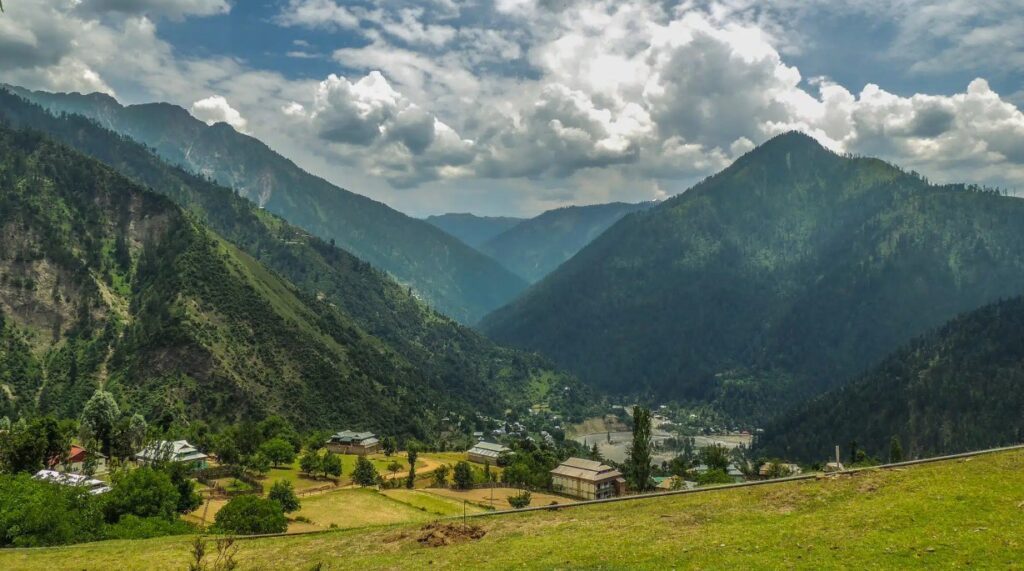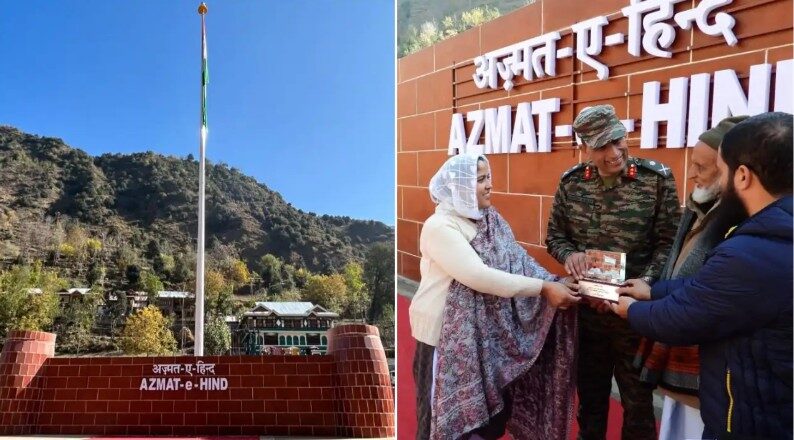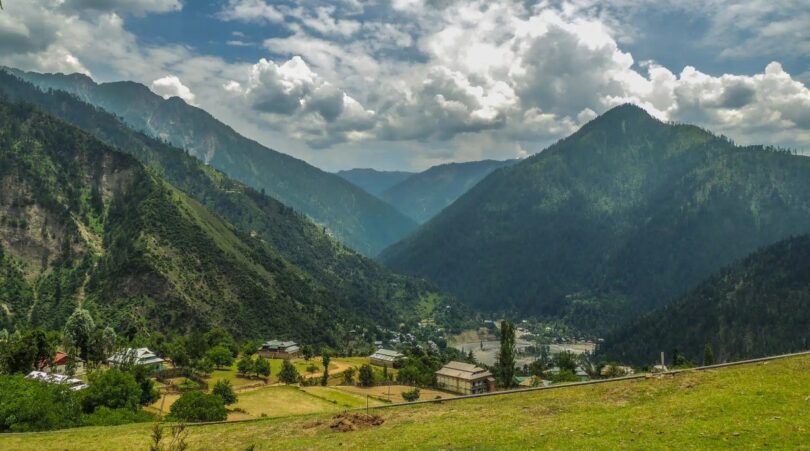“Dilli ab door nahi (Delhi isn’t far now), Now all roads lead to Teetwal,” beamed a tea vendor from Teetwal.
Teetwal, a border-village in Jammu and Kashmir, India is located on the banks of the Kishanganga River in Kupwara district and close to the Line of Control with Pakistani-occupied Kashmir. Once a thriving commercial hub prior to 1947 Partition of India, Teetwal succumbed to several cross-border terror attacks from Pakistan.
Since the signing of the Karachi Agreement by India and Pakistan in 1949, no construction is permitted within 500 yards of zero line on LOC and this “no construction zone” is considered a “no man’s land” which is secured by both nations with landmines within their respective areas. India has built an Anti-Infiltration Obstacle System (AIOS) along the 734 km of LOC. AIOS is a three-tiered fencing system with check posts where villagers are given entry on basis of a smart card based identity cards issued by the Indian Army. Teetwal is among the villages which lie between the land-mined zero point on LOC and the 3 tiers of AIOS. Villages like Teetwal, Keran, Tangdhar, Teetwal, Machil, Bangus Valley, Gurez and Uri around the LOC were often associated with cross border terrorism and marked as unsafe. However, in past years, the Indian government has taken an initiative to give access to tourists in previously restricted areas near the LoC as part of the border tourism. The Indian government’s intention is to assimilate the border areas into the tourism framework of Jammu and Kashmir to boost the economic development while bringing harmony to the region.

On 10 April 2024, Ganga Arti was performed at the banks of river Kishenganga at Teetwal. It was the first time when the pilgrims visiting the Sharda temple at LoC were able to take a dip in the Kishenganga. Over 100 pilgrims from nation wide participated in the event.
The Arti was led by Ravinder Pandita Founder of save sharda Committee Kashmir Regd .
“More such Arti events shall be held on this traditional ghat that used to exist pre partition, in future “ said Ravinder Pandita. Navratri celebrations have taken place at Sharda temple.
In November 2023, Indian Army’s ‘Azmat-e-Hind’ (Pride of India) initiative at the Line of Control (LOC) in Teetwal area of Kupwara district helped boost the border tourism in Teetwal, Kupwara.
A 104-foot-high national flag was erected which came to represent the courage of the Indian armed forces and the resilience of local communities. Since then, the flag has become not just a symbol of patriotism but has successfully placed Teetwal on the tourism map.

“‘Azmat-e-Hind’ is not just a monument; it is a statement. It reflects how security and community participation can create new opportunities even in remote corners,” said Brigadier S.K. Pradhan, Commander of the Shakti Vijay Brigade.
The memorial, the military in conjunction with the collaboration from the local communities, have been working to create a tourist-friendly atmosphere in Teetwal. There are Homestay facilities being developed, with hosts trained under Army guidance.
This initiative provides venues for sustainable livelihood opportunities for the locals which were compromised due to the ongoing conflict with Pakistan.
“The Army has supported us like family, from helping in harsh winters to creating schools and jobs. Now tourists are also coming, and it is changing our lives,” said Jaffer Hussain Lone, Sarpanch of Hajinar.
The project has also involved students from local schools.
The ‘Azmat-e-Hind’ memorial has hosted public many events such as International Yoga Day, cultural exchanges, and educational tours, transforming Teetwal into a hub of patriotism and cross-cultural learning.
“Before Azmat-e-Hind, our youth would migrate for work. Now, homestays and souvenir shops flourish,” said Tariq Ahmed, a village elder. He stated, “We’re no longer a conflict headline — we’re a destination.”










